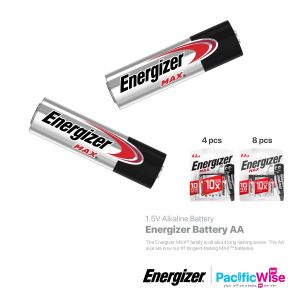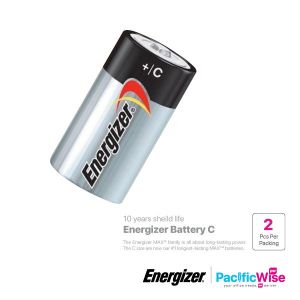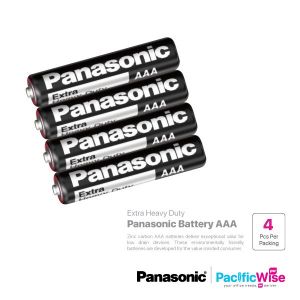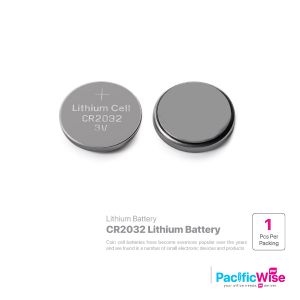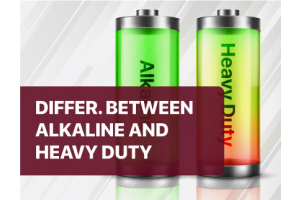What are The Different Types of Batteries and Their Uses?
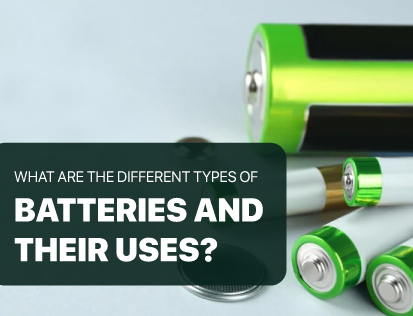
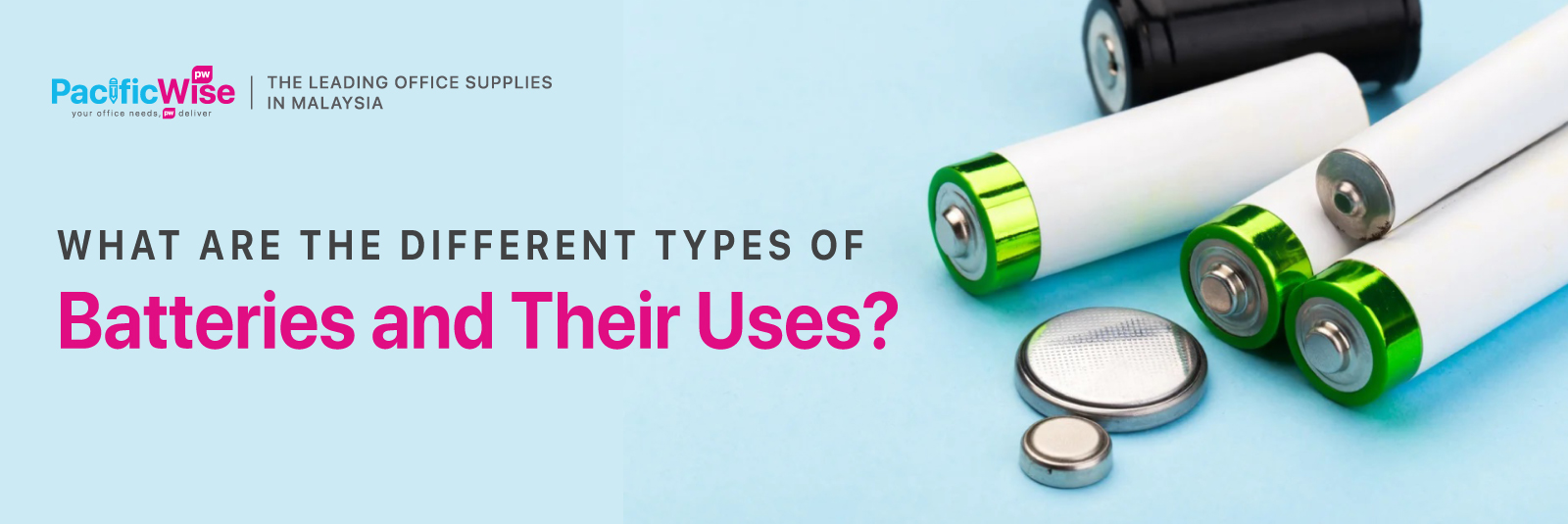
Using the right kind of batteries makes all the difference in the overall performance and lifespan of your piece of equipment. This guide will break down the various types of common battery sizes and the most use out of your device.
What Is Battery?
A battery is a collection of one or more cells, storing electrical energy for powering electrical devices.
How do batteries work?
Think of a battery as a small power plant that converts a chemical reaction into electrical energy. Various dry cell (or alkaline) batteries can differ in several ways, but they all have the same basic components. The chemical reaction starts when you insert a battery into a device – and complete the circuit. The electrolyte oxides the anode’s powered zinc. The cathode’s manganese dioxide/carbon mix reacts with the oxidized zinc to produce electricity. Interaction between the zinc and the electrolyte produces reaction products, which gradually slows the cell’s action and lowers its voltage.
| Note: For every specific size, the nominal voltage, capacity, and even dimensions slightly vary depending on the battery chemistry and manufacturing brand. |
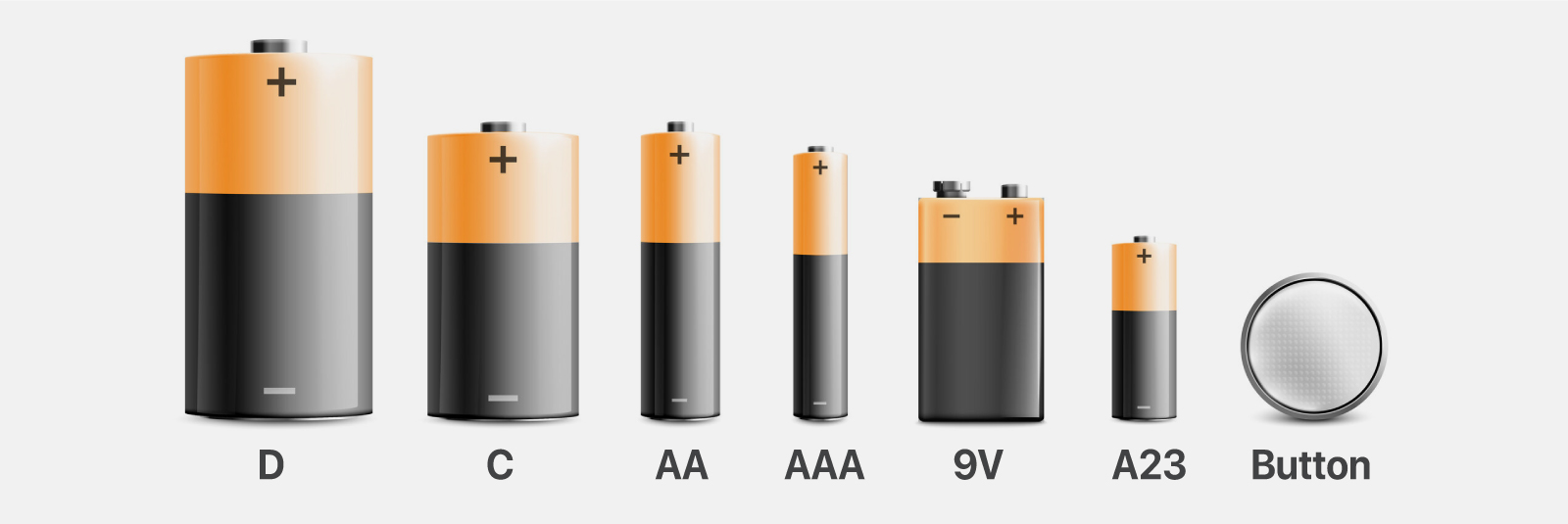
7 Types of Battery Sizes and Their Uses
Different battery sizes contribute to the overall effectiveness of your equipment, but it is important to understand why. Generally, the larger the battery is, the more capacity it has for energy storage. So even though a big and small battery are both rated at 1.5V, the big battery stores more energy and provides a longer battery life. Batteries are extremely useful to us as consumers because they convert stored chemical energy into electrical energy, eliminating the need for a direct power source.
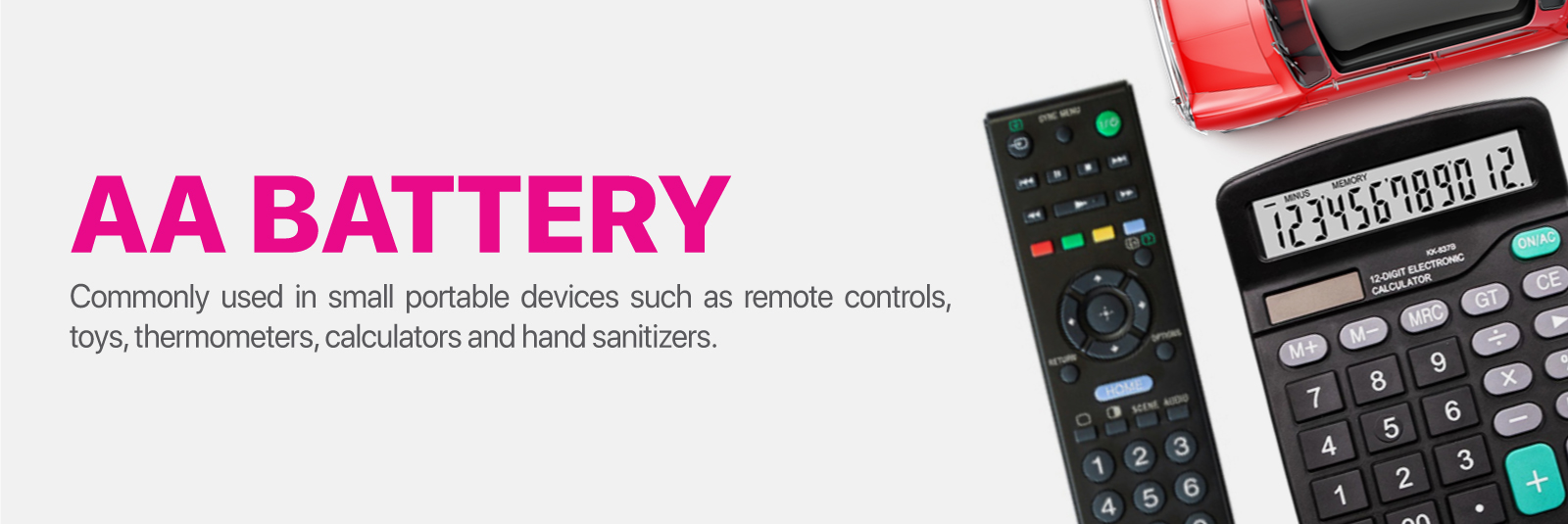
AA Battery
AA batteries are also known as Double A batteries. It has some other technical names among which LR6 is the most popular. AA size battery comes in a cylindrical shape. These are the most preferred battery size for household requirements and are thus widely available in almost all stores around us. Both primary and secondary batteries are available in AA size. Alkaline batteries, Lithium, Lithium Ion, NiCd, NiMH, and Carbon Zinc are available in AA dimensions. But the dimensions may vary slightly based on the chemistry. These batteries produce a nominal voltage of 1.5V. AA batteries are commonly used in small portable devices such as remote controls, toys, thermometers, calculators, hand sanitizers, etc. These are long-lasting batteries and offer a longer shelf life. So they are the best choice for devices like clocks which are always on.
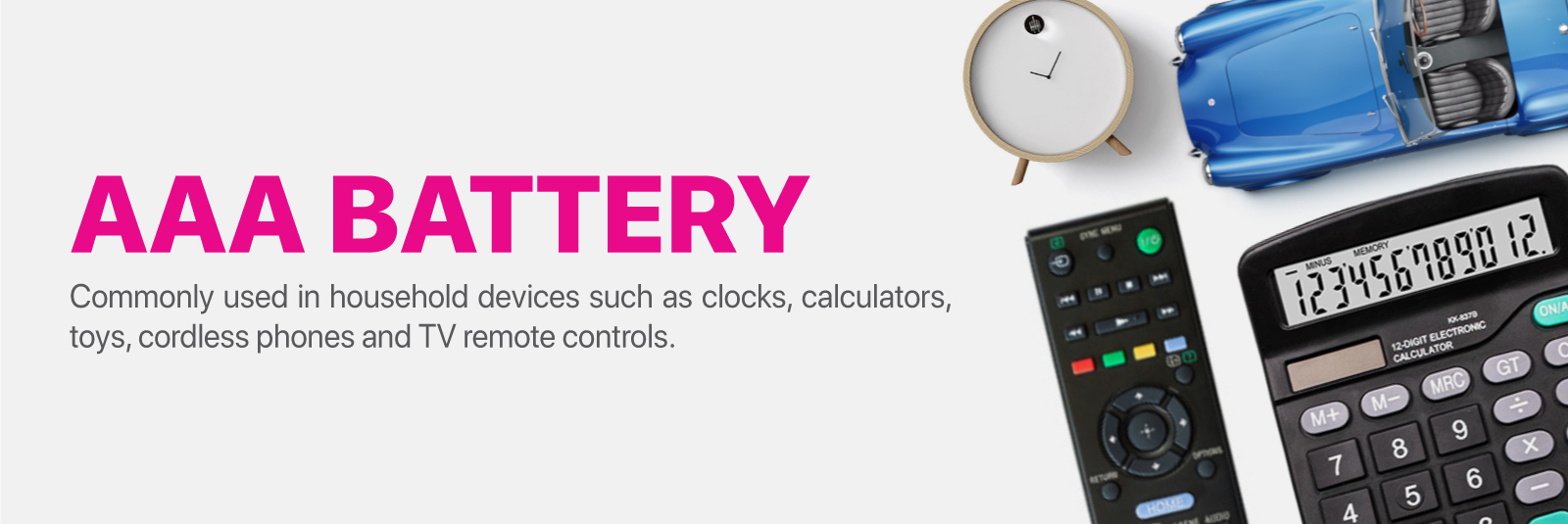
AAA Battery
Commonly known as Tripple-A batteries, AAA batteries are smaller in size than AA batteries. The other technical terms for AAA batteries include R03, AM4, MN2400, SP/out, mic, KR03, etc. Like AA batteries, AAA batteries are also cylindrical. These are also common in stores and largely used in household devices. The major applications include clocks, calculators, toys, cordless phones, TV remote controls, and other common household devices that require smaller cells. But some brands design these AAA batteries for high drain devices and are called Procell INTENSE Power batteries.
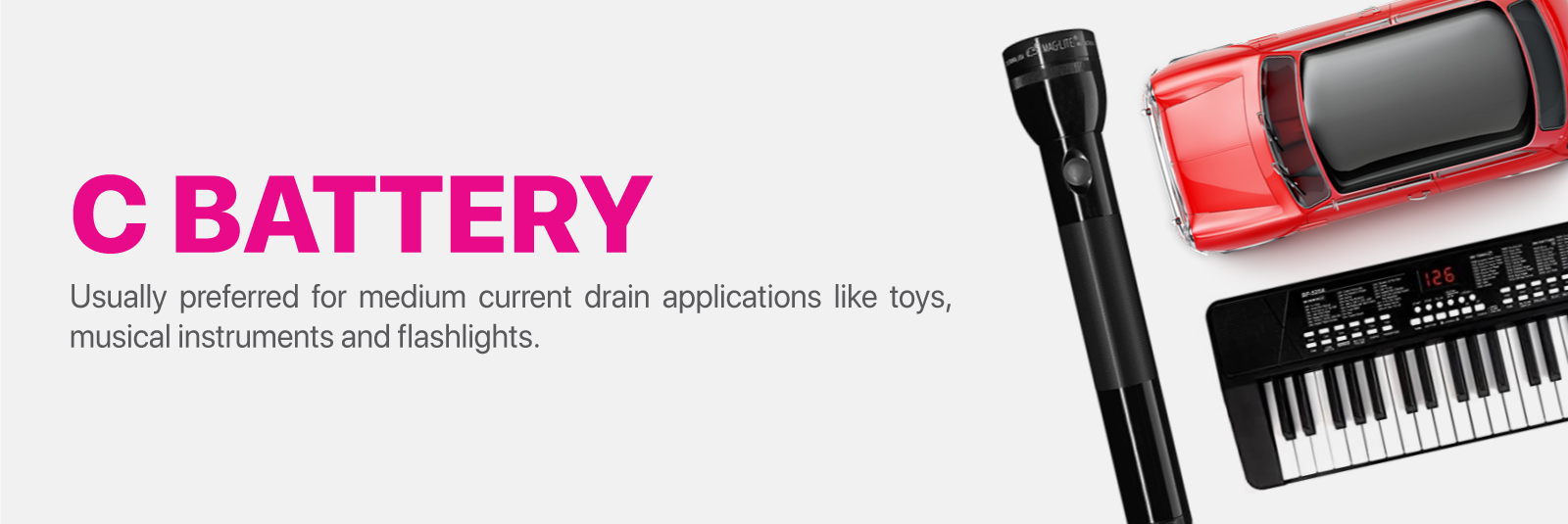
C Battery
Commonly known as R14 battery, C battery is another cylindrical battery. It is larger than AA and AAA sizes. C batteries are the standard size for dry cells and offer 1.5V nominal voltage. Both primary and secondary batteries are available in C size. Alkaline, Lithium, NiMH, and Carbon Zinc are available in C size among which alkaline and lithium are the most common. The life and capacity of C-size batteries slightly vary with respect to the battery chemistry. The maximum number of recharge cycles is up to 100, making it a sustainable choice. Size C batteries are usually preferred for medium current drain applications like toys, musical instruments, and flashlights. The capacity of these batteries is at least 3800 mAh which is sufficient to power strong torches for up to 6 long hours.
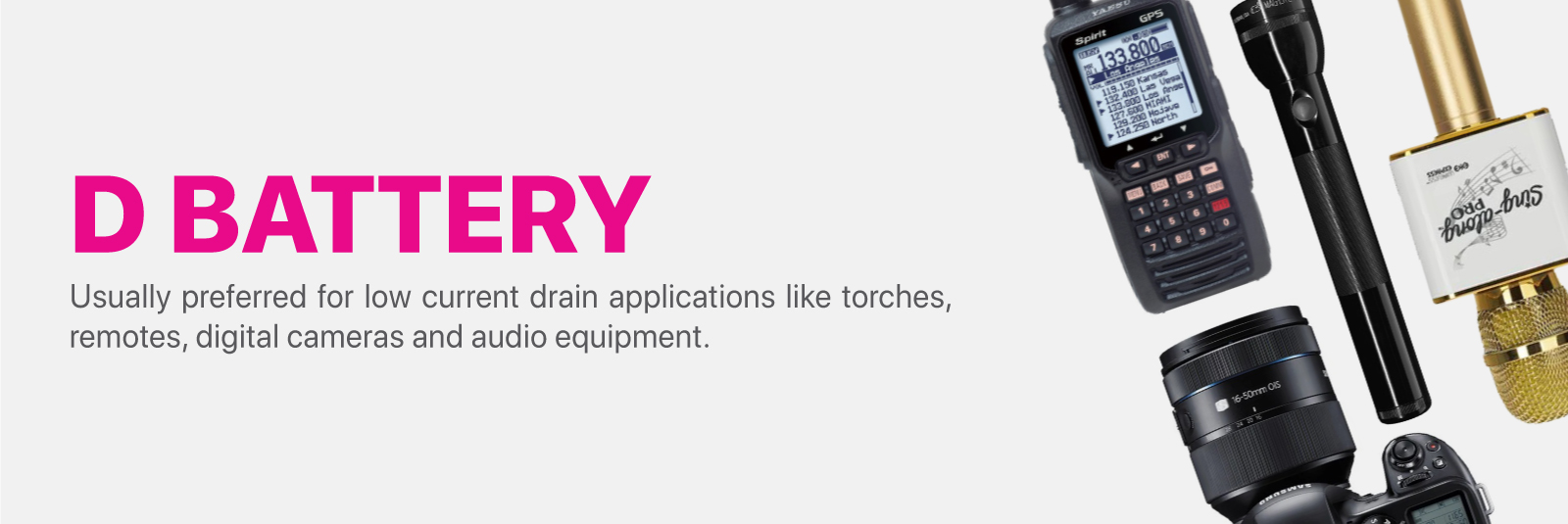
D Battery
Size D batteries are often known as D Cell and sometimes as IEC R20. This battery also comes in a cylindrical shape and is one of the largest cylindrical batteries in use. It delivers a nominal voltage of 1.5V. But the nominal voltage and battery capacity vary slightly based on the cell chemistry. Both rechargeable and non-rechargeable batteries are manufactured in D Size. It includes Alkaline, NiCd, NiMH, NiOOH, and Carbon Zinc batteries. D Size batteries are useful in low as well as high-drain devices. The low current drain applications of D Size batteries are torches, remotes, digital cameras, audio equipment, etc. Large flashlights, radio transceivers, safety systems, and systems with long run times are the high drain devices. The capacity of these batteries is in the range of 1000 – 2000 mAh.
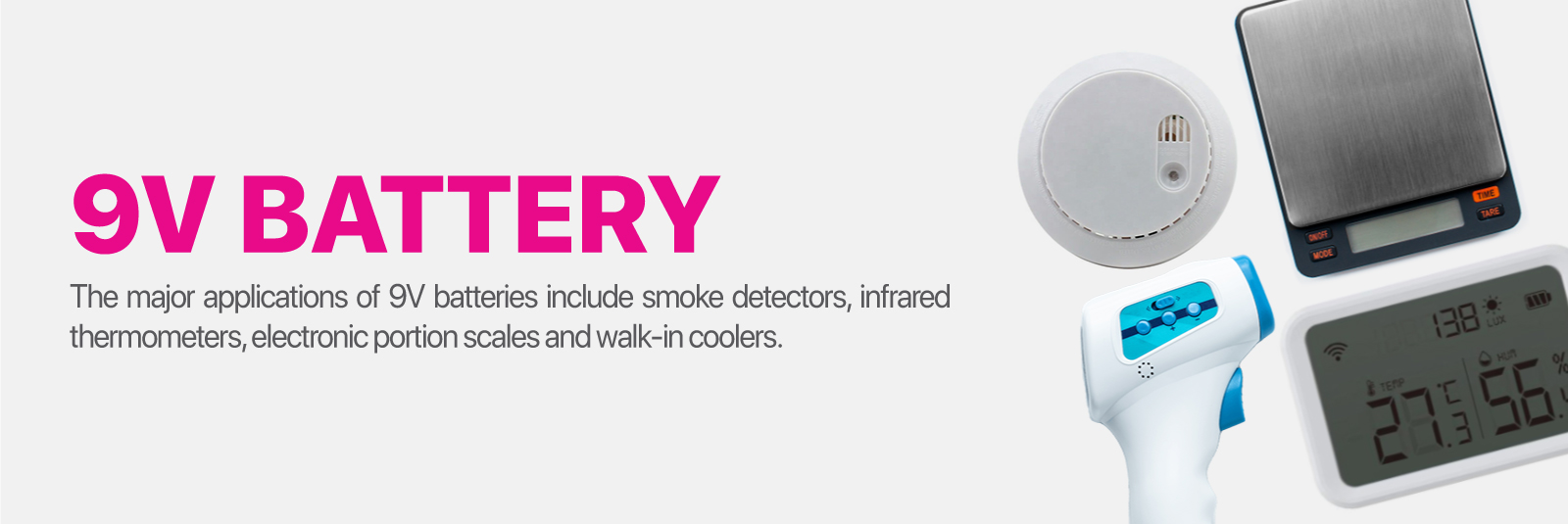
9V Battery
Size 9V batteries are also known as PP3 batteries. In some places, these batteries are called ‘Transistor Batteries’. Apart from the usual cylindrical shapes, these batteries have the shape of a rounded rectangular prism. The positive and negative terminals are at the same end. As it is very evident from the name, the nominal voltage of these batteries is 9V and is used in high-power applications. The major applications of 9V batteries include smoke detectors, battery-powered temperature alarms, infrared thermometers, electronic portion scales, walk-in coolers, etc
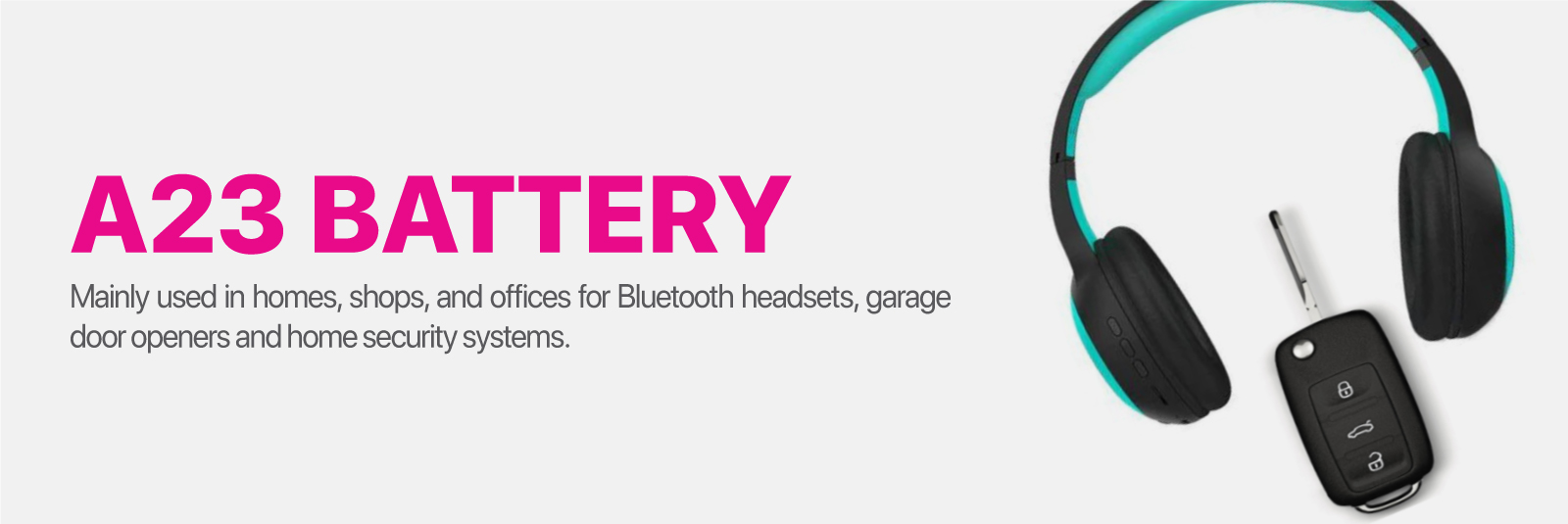
A23 Battery
A23 is another type of cylindrical battery that offers a greater nominal voltage (12V). These are Dry-cells that are made by combining eight LR932 cells. Only alkaline batteries are manufactured in A23 battery size and are rechargeable and disposable. The other technical terms for A23 size are 23AE, GP23A, V23GA, LRV08, 8LR932,8LR23, MN21, L1028 ANSI-1181A. A23 batteries are mainly used in homes, shops, and offices for powering Bluetooth headsets, garage door openers, home security systems, and remote car locking electronic devices. The power capacity of A23 is about 55mAh.
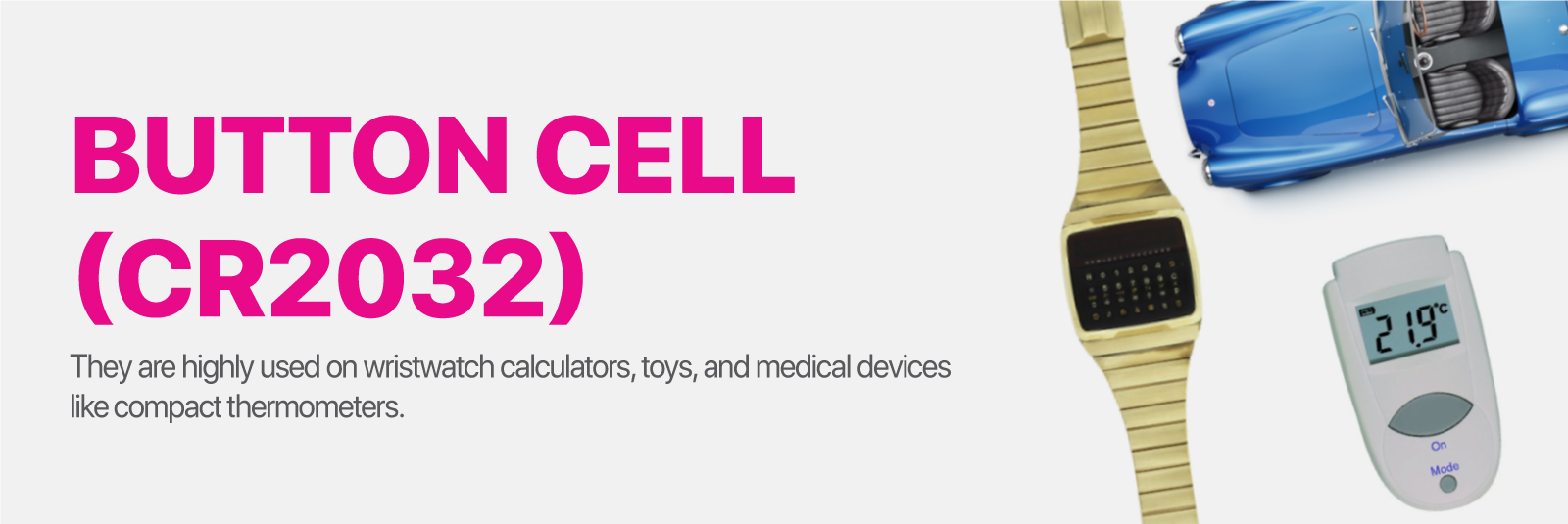
Button Cell (CR2032)
CR2032 is one of the most popular button cell types. A button cell is a small, cylindrical battery that is used in a variety of electronic devices. While button cells come in a variety of sizes, they all have one thing in common: they are significantly smaller than traditional batteries. As a result, button cells are often used in devices that require a compact power source. CR2032 is one such type of cell and is rated at 3V. Its weight-to-power ratio is very high. And only Lithium Ion batteries are manufactured as coin cells. Another technical name for this battery is 5004LC. Coin cells like CR3032 are long-lasting, small in size, and offer reliable power. They are thus capable to deliver several working hours. Therefore they are highly used on wristwatch calculators, toys, and medical devices like compact thermometers.
Conclusion
Batteries are available in different sizes. Each one is designed for a particular application. The most commonly used battery is the AA battery. It is used in clocks, TV remotes, toys, as well as some other household appliances. In some particular applications where the power requirement is more, a 9V battery is used, while in low power applications a coin cell (CR2032) is used.
Sources
https://www.etechnophiles.com/types-of-battery-sizes/




